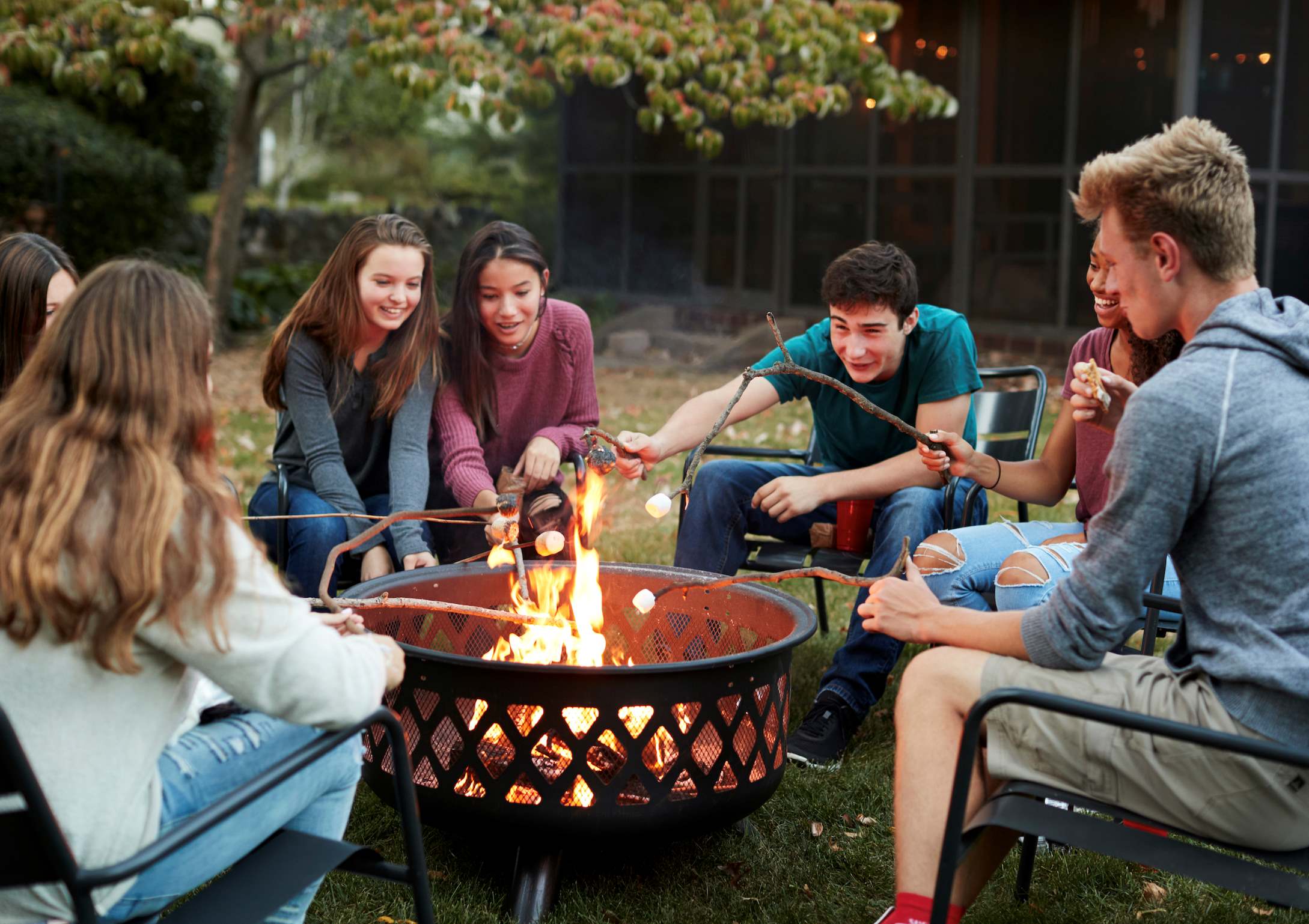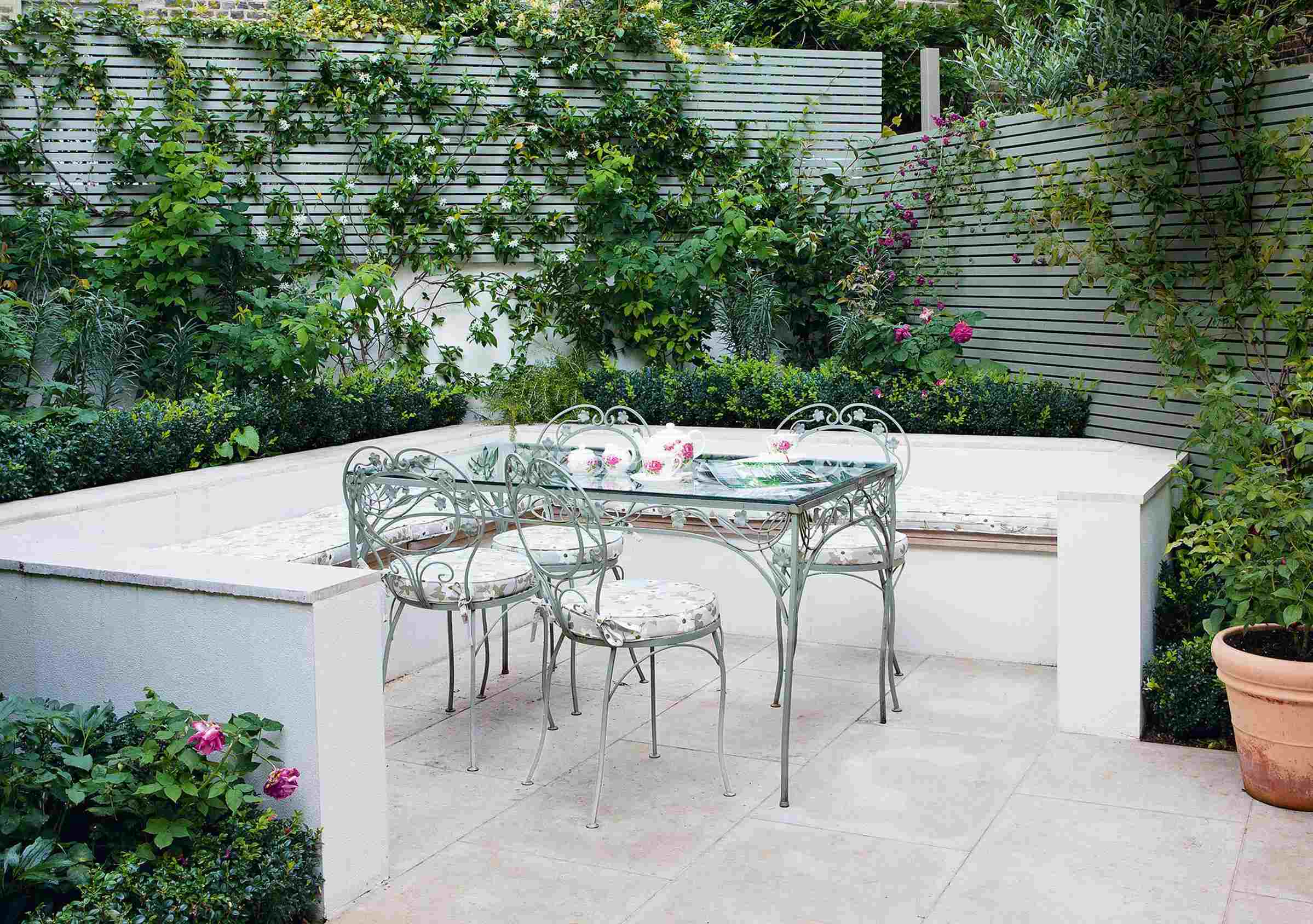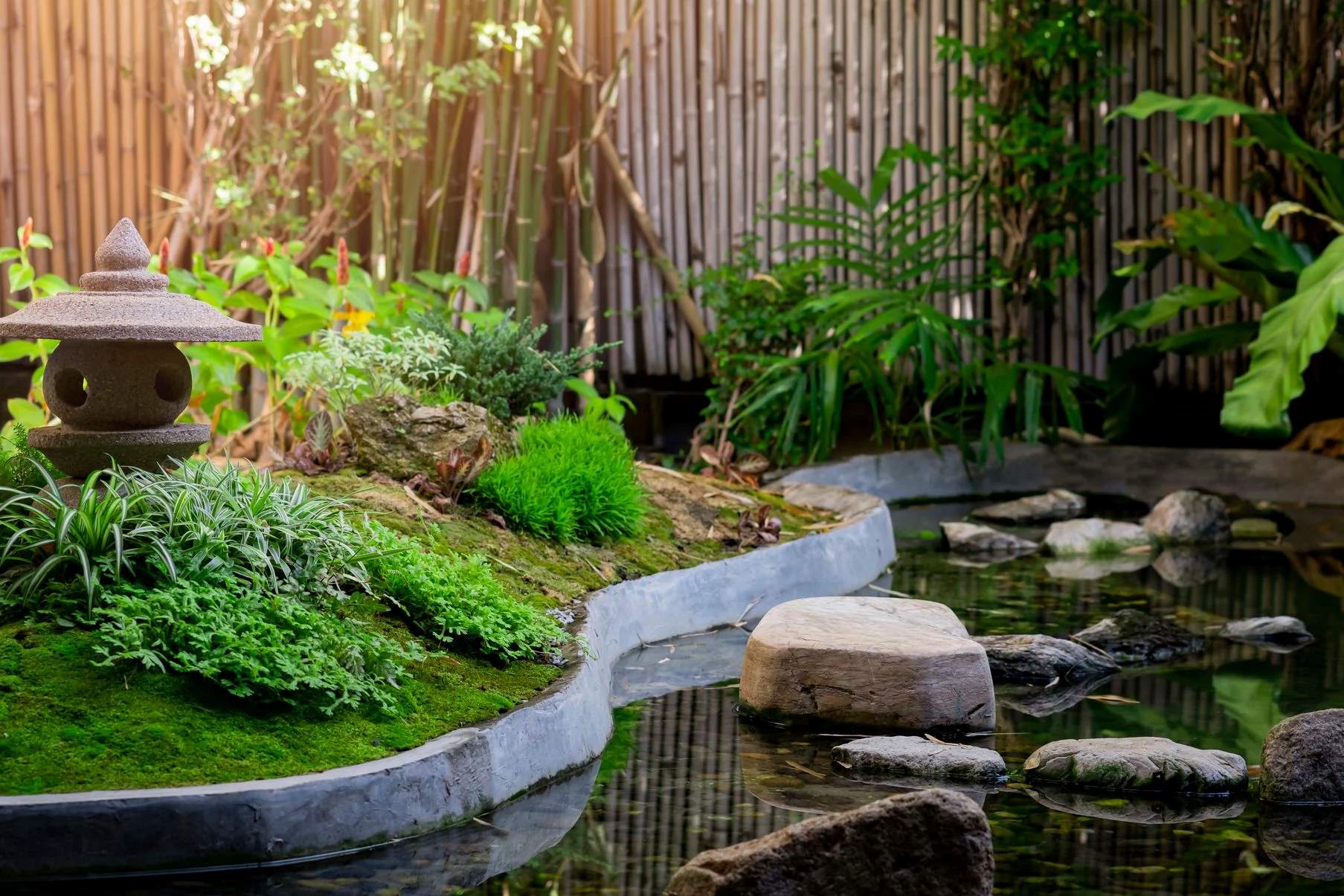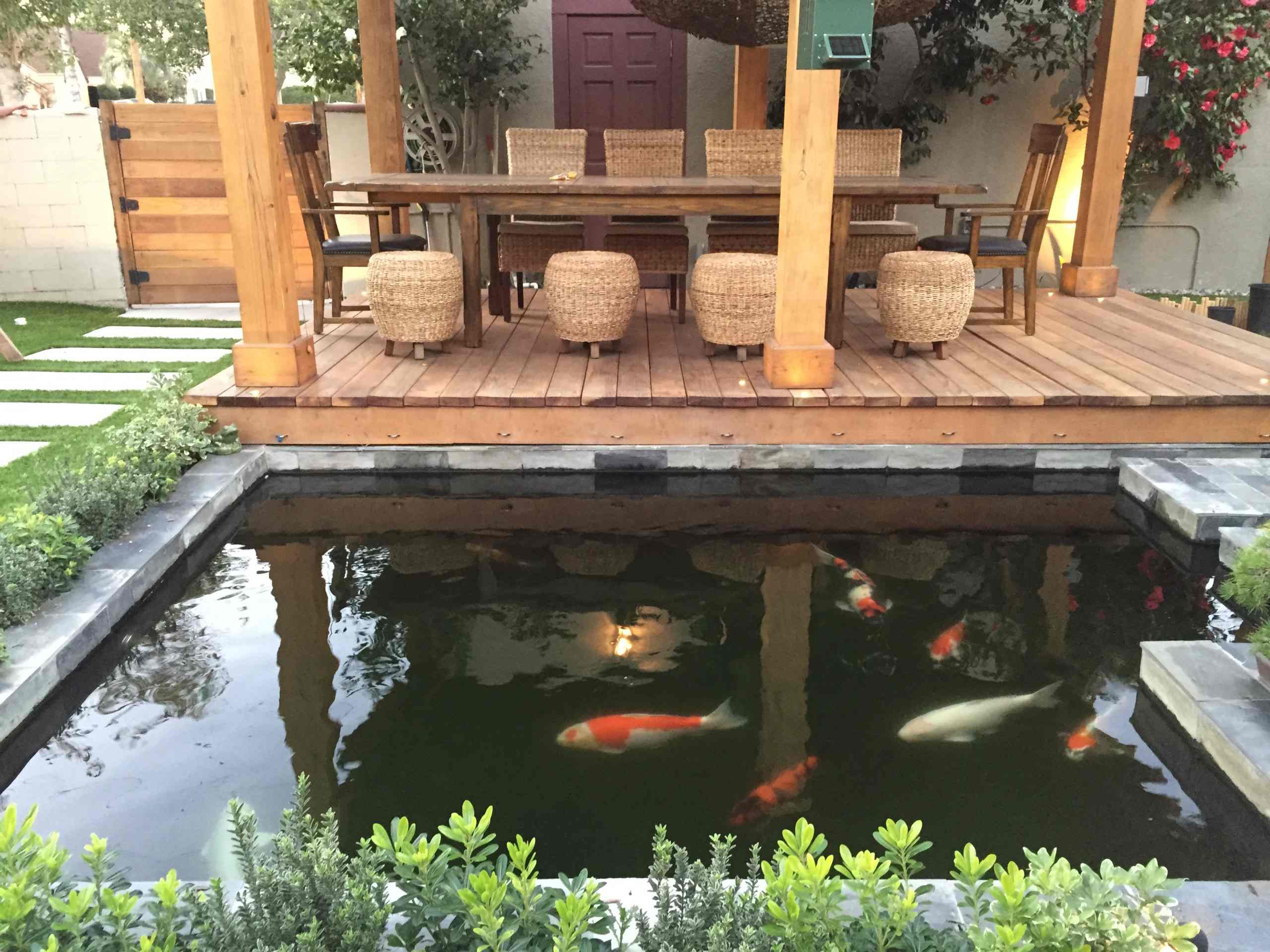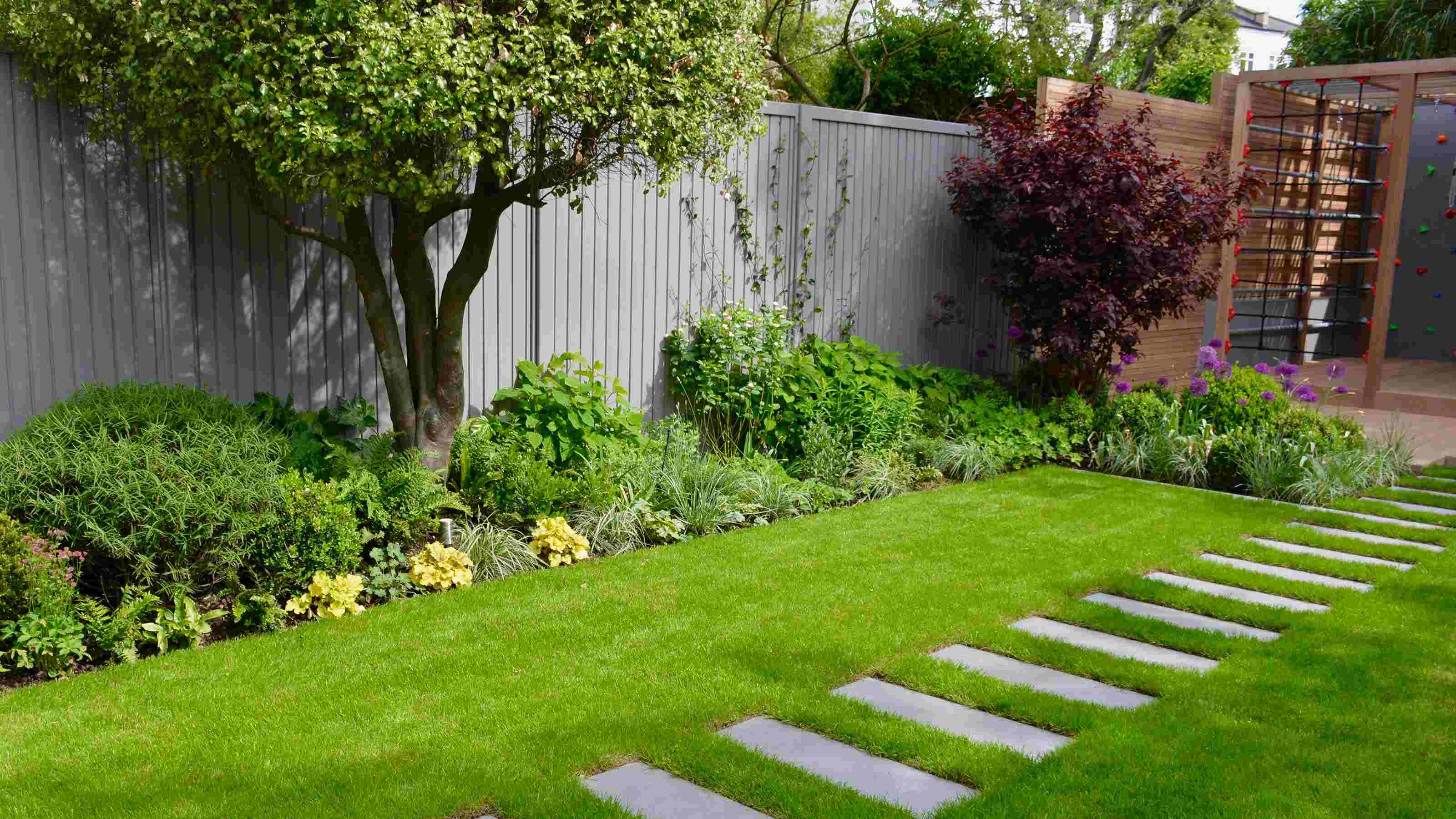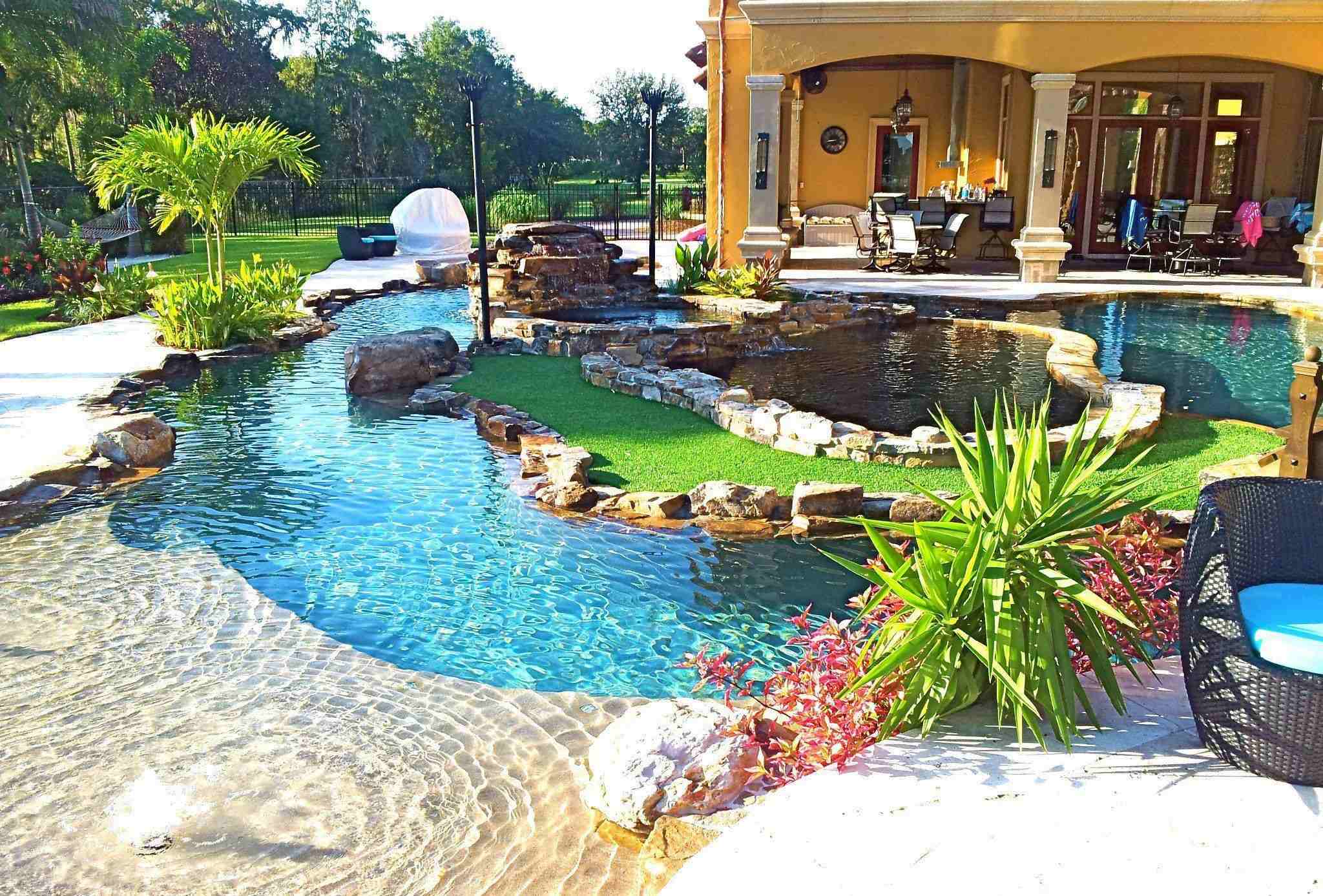Home>Garden Design>How To Make Backyard Look Nice
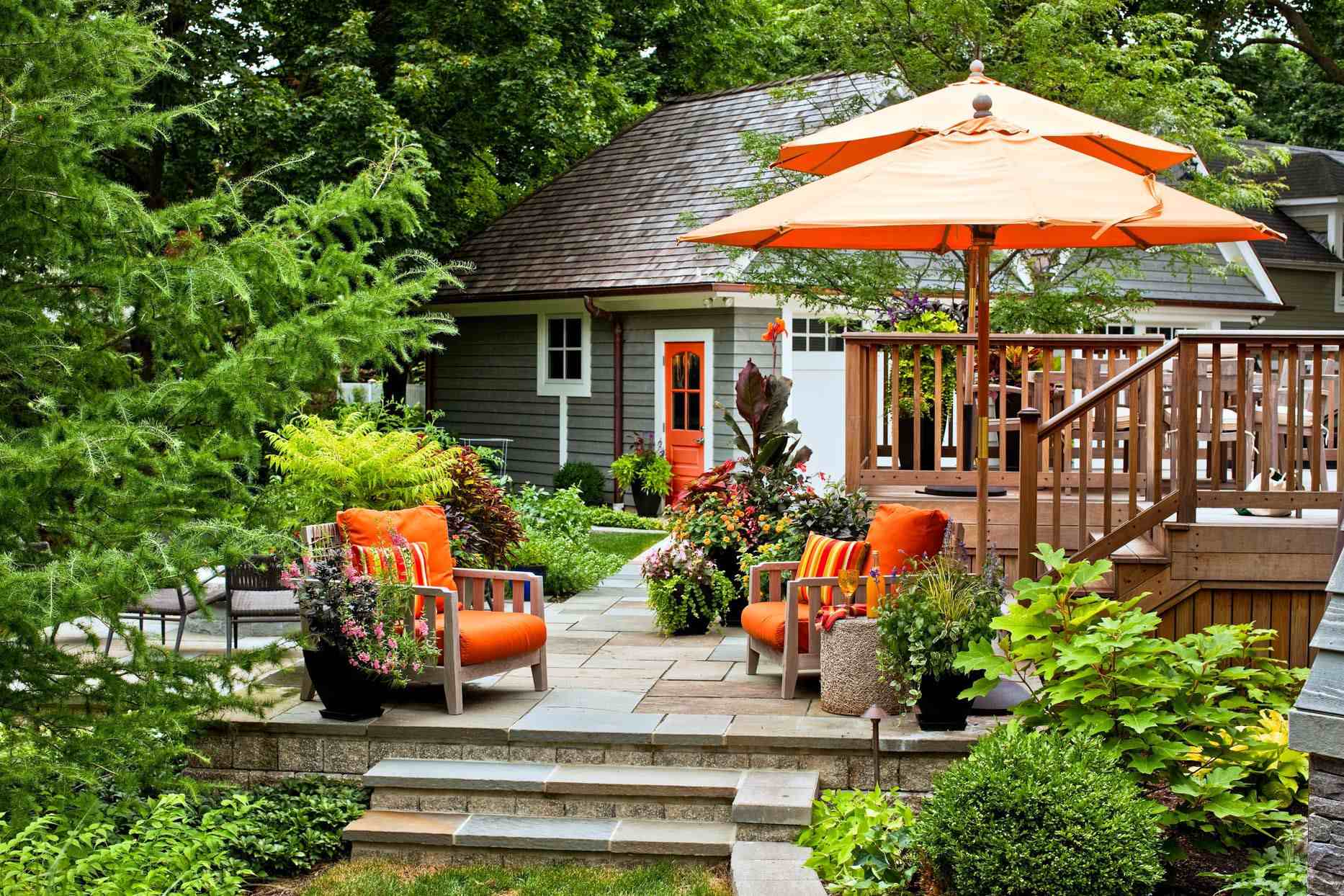

Garden Design
How To Make Backyard Look Nice
Modified: January 22, 2024
Enhance your backyard with stunning landscape design ideas. Transform your outdoor space into a beautiful oasis with our expert tips and tricks.
(Many of the links in this article redirect to a specific reviewed product. Your purchase of these products through affiliate links helps to generate commission for Chicagolandgardening.com, at no extra cost. Learn more)
Table of Contents
Introduction
Welcome to the world of landscape design, where creativity meets the outdoors to transform your backyard into a beautiful and inviting space. Your backyard is a canvas waiting to be filled with endless possibilities, from lush greenery to elegant seating areas. Whether you’re looking to create a tranquil oasis or a vibrant entertainment space, a well-designed backyard can greatly enhance the quality of your outdoor living experience.
With the right planning and a touch of imagination, you can turn your backyard into a personal sanctuary that reflects your taste and lifestyle. Landscape design goes beyond just planting a few flowers or arranging some furniture; it involves careful consideration of various elements and principles to create a harmonious and visually appealing space.
In this article, we’ll explore the key steps and considerations to take when designing your backyard. From selecting a theme to incorporating different elements, we’ll guide you through the process of making your backyard look nice. So, grab a cup of coffee, and let’s dive into the world of landscape design!
Choosing a Theme
Before diving into the design process, it’s important to choose a theme that will guide the overall look and feel of your backyard. A theme provides a cohesive vision and helps create a sense of harmony in your outdoor space. It acts as a guiding principle for selecting plants, materials, colors, and decorative elements.
When selecting a theme, consider your personal preferences, the architectural style of your home, and the purpose of your backyard. Do you want a contemporary and minimalist look? Or perhaps a lush and tropical paradise? The theme you choose should align with your taste and complement the overall aesthetic of your property.
One approach is to draw inspiration from nature itself. You can create a Japanese Zen garden, with its serene and minimalist design, using gravel, rocks, and strategically placed plants. If you have a passion for Mediterranean aesthetics, consider a theme that incorporates elements like terracotta pots, vibrant flowers, and a pergola draped with vines.
Another popular option is to create a themed backyard based on specific activities or interests. For example, if you love hosting outdoor gatherings, a theme centered around an entertainment patio or a barbecue area may be perfect for you. If you’re a green thumb, a garden-themed backyard with raised beds and a greenhouse could be your haven.
Remember, the theme you choose will impact the selection of plants, furniture, and other decorative elements. It’s important to choose a theme that not only resonates with you but also fits the overall ambiance you want to create. Take some time to research different themes, gather inspiration from magazines and online resources, and create a mood board to help you visualize your dream backyard.
Planning and Designing
Once you’ve chosen a theme for your backyard, it’s time to start planning and designing the layout. This crucial step will ensure that your space is functional, aesthetically pleasing, and makes the most of the available area.
Start by taking accurate measurements of your backyard and creating a scaled drawing or using a landscaping software. This will help you visualize the space and ensure that everything fits harmoniously. Consider the natural elements of your backyard, such as sunlight, shade, and existing trees or structures, as they will influence the design.
Next, think about the different zones you want to create within your backyard. Common areas include seating and dining areas, play areas, garden beds, and focal points. Make sure you allocate enough space for each zone, keeping in mind the functionality and flow between them. For example, if you have a pool, you may want to create a lounge area nearby for relaxation and entertaining.
When designing the layout, consider the principles of balance, symmetry, and proportion. Balance the visual weight of elements by placing larger or visually prominent features opposite each other. Create symmetry by mirroring the placement of plants or objects on both sides of the space. Ensure proportion by making sure the scale of elements is appropriate to the overall size of the backyard.
Think about the materials you want to use in your backyard design. Consider factors such as durability, maintenance, and how well they fit your chosen theme. For example, a modern theme may call for sleek and minimalistic materials like concrete or metal, while a rustic theme may incorporate natural elements like wood or stone.
Lastly, don’t forget to consider functionality and practicality in your design. Think about the pathways and walkways to ensure easy access and flow throughout the backyard. Consider factors like privacy and wind patterns when deciding on the placement of seating areas or what types of plants to use as natural screens.
By putting thought and effort into the planning and designing stage, you will create a well-structured and visually pleasing backyard that maximizes its potential and fits your lifestyle and preferences.
Creating a Seating Area
A well-designed seating area is essential for making your backyard a comfortable and inviting space for relaxation and entertainment. Whether you have a small balcony or a spacious lawn, there are various options to consider when creating a seating area that suits your style and needs.
First, decide on the type of seating that best fits your backyard and theme. Options range from classic patio sets with chairs and a table to lounge-style seating with plush cushions and ottomans. If space is limited, consider built-in seating like benches or a cozy corner with floor cushions.
Consider the materials for your seating furniture, taking into account durability and weather resistance. For a sleek and modern look, opt for materials like metal or rattan. If you prefer a more natural and rustic feel, consider wooden furniture, which can be treated to withstand outdoor conditions.
When determining the placement of your seating area, consider factors such as sunlight, shade, views, and privacy. Place your seating in a location that offers a pleasant view of the rest of your backyard or focal points like a fountain or garden. Create shade with umbrellas, pergolas, or strategically placed trees or awnings.
Enhance the comfort and ambiance of your seating area by adding accessories such as outdoor cushions, throws, and rugs. These elements not only provide extra comfort but also add style and warmth to your space. Choose weather-resistant materials and easily washable fabrics for longevity.
Lighting is another important aspect of creating an inviting seating area. Consider incorporating ambient lighting with string lights, lanterns, or solar-powered landscape lights. This will allow you to enjoy your seating area well into the evening and create a cozy and magical atmosphere.
Lastly, don’t forget to accessorize your seating area with side tables or coffee tables for convenience. These surfaces provide a place to rest drinks, books, or snacks while enjoying the outdoors.
Remember, the goal of creating a seating area in your backyard is to provide a comfortable and inviting space for relaxation and socializing. Choose furniture and accessories that align with your personal style and create a cozy atmosphere that you and your guests will love.
Adding Greenery and Plants
No backyard is complete without the beauty and serenity that plants bring. Adding greenery to your outdoor space not only enhances the aesthetics but also creates a refreshing and rejuvenating atmosphere. Whether you have a green thumb or are new to gardening, there are plenty of ways to incorporate plants into your backyard design.
Start by considering the type of plants that thrive in your region and climate. Look for plants that are well-suited to the amount of sunlight and shade in your backyard. Consider factors such as water requirements, maintenance needs, and the overall look and feel you want to achieve.
When choosing plants, think about the different layers and heights you want to create. This includes ground covers, shrubs, trees, and climbing plants. Layering different types of plants adds depth and visual interest to your backyard. It also provides habitats for birds, butterflies, and other wildlife.
Create focal points in your backyard by incorporating eye-catching plants or unique planters. Consider using tall, architectural plants as a centerpiece or placing a group of colorful flowers in a designated area. Use different textures and foliage colors to add variety and create a dynamic visual impact.
Don’t limit yourself to just plants on the ground. Utilize vertical spaces by installing trellises or climbing frames for plants like ivy or jasmine. Hang plants from pergolas or use wall-mounted planters to create a green wall effect. These vertical gardens add an element of interest and help maximize space.
In addition to plants, consider adding other natural elements such as a vegetable garden or herb garden. This allows you to grow your own fresh produce and spices while adding a practical and visually pleasing element to your backyard.
Remember to regularly maintain and care for your plants. Water them appropriately, prune when needed, and fertilize according to their specific needs. Keep an eye out for pests and diseases to ensure the health and longevity of your plants.
By incorporating a variety of plants and greenery into your backyard, you can create a lush and vibrant oasis that invites you to relax and connect with nature. The possibilities are endless, so let your creativity and love for plants guide you in transforming your backyard into a haven of green beauty.
Installing Outdoor Lighting
Outdoor lighting plays a crucial role in transforming your backyard into an enchanting and functional space that can be enjoyed day and night. It not only enhances the aesthetics of your outdoor area but also improves safety and highlights key features. From subtle ambient lighting to dramatic spotlights, there are various options to consider when installing outdoor lighting in your backyard.
Start by determining the areas in your backyard that you want to illuminate. This could include pathways, seating areas, garden beds, or focal points like water features or sculptures. By strategically placing lights in these areas, you can create a warm and inviting ambiance and ensure the functionality of your outdoor space.
Choose the appropriate type of lighting fixtures based on your preferences and the intended purpose. For pathways and steps, consider installing low-level lighting such as bollard lights or path lights to ensure safe navigation. Spotlights can be used to highlight architectural elements or plants, creating a focal point in your backyard. String lights are a popular choice for adding a touch of magic, draping them across trees, pergolas, or outdoor seating areas.
When it comes to lighting design, consider the various layers of lighting to create depth and visual interest. Combine different light sources such as uplights, downlights, and wall sconces to create a dynamic effect. Use warm or cool-toned bulbs to evoke the desired atmosphere and mood in different areas of your backyard.
Consider the practical aspects of outdoor lighting as well. Choose fixtures and bulbs that are weather-resistant and durable to withstand exposure to the elements. Opt for energy-efficient LED lights to reduce energy consumption and increase the lifespan of the bulbs. Install timers or motion sensors to automate the lighting and make it convenient and energy-efficient.
Lighting controls are another aspect to consider. Dimmer switches or smart lighting systems allow you to adjust the intensity of the lights or program them to specific schedules or scenarios. This not only adds flexibility but also enhances the overall functionality and versatility of your outdoor lighting.
Lastly, be mindful of light pollution and its impact on the environment. Direct your lighting downward whenever possible to minimize light spillage and unnecessary brightness. This not only preserves the natural darkness of the night sky but also limits disruption to wildlife and neighboring properties.
With carefully planned and installed outdoor lighting, you can transform your backyard into a captivating and inviting space that can be enjoyed both day and night. Illuminate the beauty and functional aspects of your outdoor area, and let the lights bring your backyard to life.
Incorporating Water Features
Water features are a fantastic way to add a sense of tranquility and beauty to your backyard. The gentle sound of flowing water creates a calming ambiance and adds a touch of elegance to your outdoor space. Whether you have a large garden or a small patio, there are various water features you can incorporate into your backyard design.
One popular option is a fountain, which can be a standalone sculpture or integrated into a pond or pool. Fountains come in a variety of styles and sizes, allowing you to choose one that complements your backyard theme. The sound of water splashing and the sight of cascading water can become a focal point that enhances the overall aesthetics of your outdoor area.
A pond is another beautiful and versatile water feature to consider. It can be home to aquatic plants, fish, and even create a habitat for wildlife. Install some water lilies or lotus flowers to add a touch of color and and create a serene and relaxing atmosphere. You can also add a small bridge or stepping stones for a charming touch.
If you have limited space, consider a wall-mounted or tabletop water feature. These compact water features not only add visual interest but also provide the soothing sound of trickling water. They can be easily incorporated into a patio or balcony, bringing the benefits of water to smaller outdoor spaces.
When incorporating water features, consider the overall design and placement in your backyard. Think about the sound and visual impact they will have on the space. For example, placing a water feature near a seating area can create a calming ambiance for relaxation and outdoor enjoyment.
Ensure proper maintenance and cleanliness of your water features. This includes regular cleaning and balancing the water chemistry if you have fish or aquatic plants. Use appropriate filters or pumps to keep the water clean and prevent stagnation. Additionally, consider safety measures if you have children or pets, such as adding protective grates or fencing around deeper water features.
Lastly, don’t forget to consider lighting for your water feature. Underwater or ambient lighting can create a stunning effect and highlight the beauty of the water feature during the evening hours.
Incorporating water features into your backyard design brings a sense of serenity and visual appeal. The sound and presence of water can create a peaceful oasis that allows you to escape the hustle and bustle of daily life, turning your backyard into a haven of relaxation and natural beauty.
Adding Decorative Elements
Adding decorative elements is the perfect way to personalize your backyard and make it truly reflect your style and personality. These elements can enhance the overall aesthetics of your outdoor space and create a welcoming and inviting atmosphere. From sculptures and art installations to garden ornaments, there are countless options to consider when it comes to adding decorative elements to your backyard.
One option is to incorporate sculptures or art installations. These can range from large, statement pieces to smaller, more intricate designs. Choose sculptures that align with your theme or create a focal point in your backyard. Sculptures made from various materials like metal, stone, or wood can add an artistic touch and create an interesting visual element.
Garden ornaments are another popular choice for adding personality and charm to your backyard. You can opt for whimsical sculptures like fairy statues, gnomes, or animal figures. Alternatively, consider decorative bird feeders, wind chimes, or garden stakes that add color and movement to your outdoor space.
Another way to add decorative flair to your backyard is through the use of containers and planters. Choose unique containers that complement your theme, such as ceramic pots, rustic wooden planters, or modern metal containers. Arrange them strategically with a variety of plants to add texture and visual interest. Hanging baskets and wall-mounted planters can also be used to maximize vertical space and create a lush and vibrant backdrop.
Outdoor textiles can also be used to add a touch of style and comfort to your backyard. Consider adding outdoor rugs, cushions, and throws to your seating areas. Choose fabrics that are weather-resistant and easy to clean to ensure their longevity. These textiles not only enhance comfort but also add color and pattern to your outdoor space.
Lighting can also be a decorative element in itself. Consider using lanterns, candle holders, or string lights that not only illuminate your backyard but also add a touch of charm and ambiance. You can even incorporate solar-powered lighting options for an eco-friendly and energy-saving solution.
Lastly, don’t forget to incorporate elements that reflect your personal interests and hobbies. For example, if you enjoy reading, create a cozy reading nook with a small library or a hammock surrounded by plants. If you love cooking, consider adding an outdoor kitchen or a fire pit for grilling and entertaining.
When adding decorative elements, it’s important to strike a balance and not overcrowd your backyard. Consider the scale, placement, and overall cohesion with the rest of your outdoor space. Choose elements that bring you joy and create a space that is uniquely yours.
Maintaining and Upkeeping
Once you have designed and created your dream backyard, it’s important to prioritize maintenance and upkeep to ensure its longevity and beauty. Regular maintenance not only keeps your outdoor space looking its best but also prevents any potential issues from arising. Here are some key tips for maintaining and upkeeping your backyard:
1. Regularly water and fertilize your plants to keep them healthy and vibrant. Adjust the watering schedule based on weather conditions and the specific needs of each plant. Trim and prune plants as necessary to promote growth and maintain their shape.
2. Keep your lawn well-maintained by mowing it regularly and removing any weeds. Apply appropriate fertilizers and grass seeds to promote a lush and green lawn. Consider aerating the soil to improve air circulation and drainage.
3. Sweep or hose down paved areas, decks, and pathways to remove dirt, leaves, and debris. This helps prevent the buildup of moss or algae and keeps the surfaces clean and safe.
4. Check and maintain any outdoor furniture or structures. Clean and treat wooden furniture to protect it from weather damage. Inspect and repair any loose or damaged parts of structures like pergolas, fences, or trellises.
5. Regularly inspect and clean your water features, such as fountains or ponds. Remove debris, check pumps and filters, and keep the water clean and well-balanced. This ensures the longevity of the water feature and promotes a healthy environment for aquatic plants and fish.
6. Check and maintain the lighting in your backyard. Replace any burnt-out bulbs and clean fixtures to ensure proper illumination. Inspect the wiring and connections to ensure safety and functionality.
7. Control pests and diseases by regularly inspecting your plants and taking appropriate action. Use organic methods or eco-friendly pesticides to minimize harm to beneficial insects and wildlife.
8. Keep an eye out for any signs of damage or wear and tear in your backyard. Address any issues promptly to prevent them from escalating and becoming more costly to fix.
9. Consider seasonal maintenance tasks, such as winterizing your backyard for cold weather or preparing it for the hot summer months. This may involve covering furniture, protecting plants, or adjusting watering schedules.
10. Regularly assess and update your backyard design to reflect your changing needs and preferences. This could involve adding new plants, refreshing furniture or accessories, or incorporating new elements that enhance the functionality or aesthetics of your outdoor space.
By implementing a regular maintenance routine and giving your backyard the attention it deserves, you can ensure that it remains a beautiful, inviting, and enjoyable space for years to come.
Conclusion
Designing and creating a beautiful backyard is a fulfilling and rewarding endeavor that allows you to enjoy the outdoor space to its fullest potential. By following the steps and considerations outlined in this article, you can transform your backyard into a haven that reflects your style, meets your needs, and enhances your overall quality of life.
Choosing a theme sets the foundation for the design process, ensuring a cohesive and harmonious look. Planning and designing the layout, incorporating seating areas, adding greenery and plants, installing outdoor lighting, incorporating water features, and adding decorative elements all contribute to the charm and functionality of your backyard.
Regular maintenance and upkeeping are crucial to preserve the beauty and longevity of your outdoor space. By staying on top of watering, fertilizing, cleaning, and addressing any issues promptly, you can ensure that your backyard remains a welcoming and enjoyable place for years to come.
Remember, your backyard is an extension of your home, and with a little creativity, thoughtful planning, and attention to detail, you can create a space that offers endless possibilities for relaxation, entertainment, and connection with nature.
So, go ahead and embark on this exciting journey of landscape design. Let your imagination soar, and let the beauty of your backyard become a true expression of your personal style and passion for the great outdoors.

